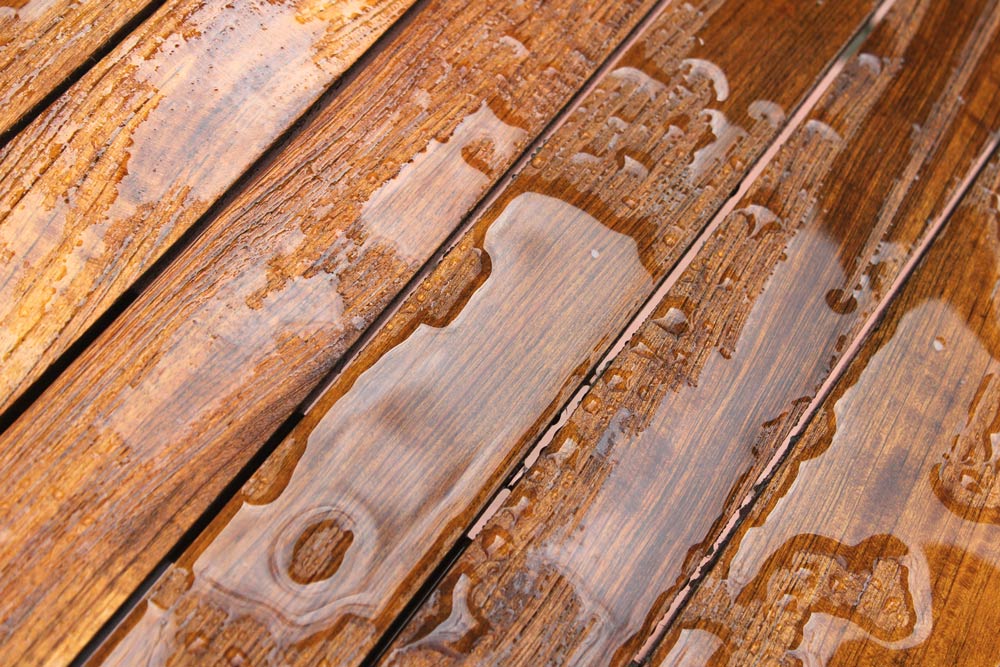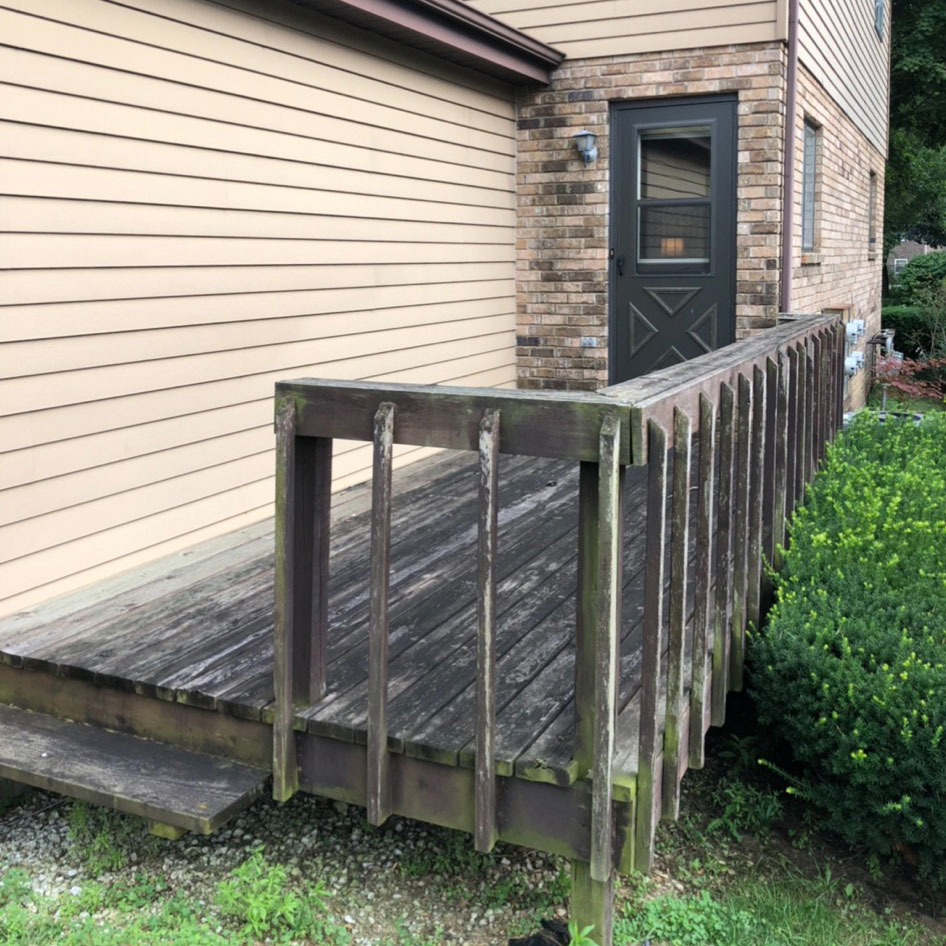
Deck Staining and Sealing
At Deck Rescue, we favor water-based, UV-resistant toners over traditional stains.
Toners give you the advantage of adding a rich, natural color to your deck without the hassle of "stripping" the existing product off with each subsequent treatment.
The thing to keep in mind with toners, as opposed to stains, is that they allow more of the wood grain to show through. This results in your wood structures having a pleasing blend of natural colors after being sealed. These translucent tones will vary depending upon the angle from which you view the wood, as well from the reflection of sunlight off it. Knotholes (especially those leaking sap / pine resin), will dry a chalky, whitish color. Short of board replacement, there is no preventative against this type of occurrence.
While our typical treatment lasts 2 - 3 years on horizontal surfaces, certain situations may require a maintenance coating the following year. They are as follows:
DECK HAVING BEEN STRIPPED: Please refer to our Deck Washing page for complete details.
CEDAR & REDWOOD: These types of lumber are known as "softwoods" and generally cannot hold stain for more than one year. Once desired for their natural resistance to termites and dry-rot, they are now known to be high-maintenance decking. Due to cedar & redwood's lack of density, stains and toners tend to peel / flake off prematurely -- particularly when the boards are exposed to direct sunlight. In addition, these softwoods contain an extract known as "tannin" which, when combined with an oil-based stain, generally turns the wood black from the growth of mold spores. In short, the woodgrain of cedar & redwood is gorgeous, but the upkeep is annual.
SOLID STAINS: Some homeowners prefer the look of a solid (opaque) stain. Others have acquired a home whose deck was previously coated with a solid stain which cannot be removed. It must be noted that in cold-weather climates this type of stain tends to peel as it weathers. Prolonged exposure to excessive sunlight is another cause for peeling. Typically, however, in either case our treatment will still last 2 - 3 years on flat surfaces before a complete treatment is required again. We leave with you with extra stain upon completing your job, enabling you to perform touch-ups as needed in the meantime.
Snow & ice essentially act as "glaciers" during the winter, causing lifting of the product. Expansion & contraction of the boards due to variations in temperatures and moisture levels also contribute to the problem.
Our advice when you opt for a solid stain is to pick as dark a color as you can tolerate. Lighter colors cast shadows over defects in older boards. They also highlight the areas where the previous coating could not be removed from the wood.
While some of these defects can be remedied by sanding, it has been our experience that the majority of homeowners choose not to spend additional money for this premium service. Please advise us if you would like a quote for sanding, understanding that it may very well add hundreds to the price of your restoration. In most cases, board replacement is your better alternative.





